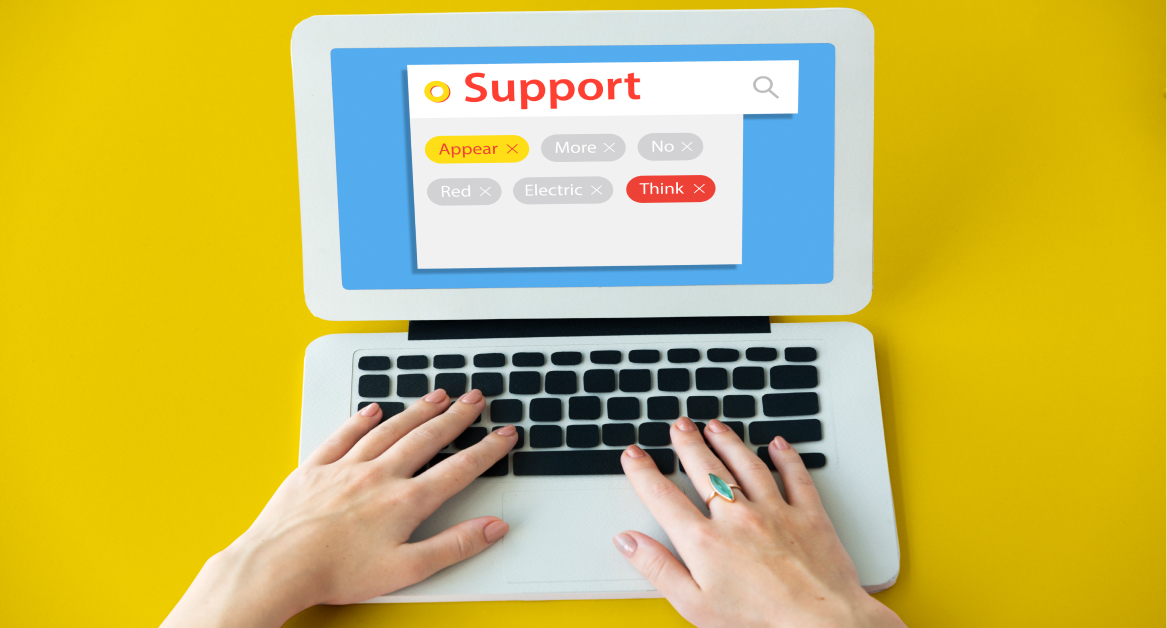In today’s rapidly evolving digital landscape, managing a fleet of iOS devices—such as iPhones and iPads—has become a critical task for IT administrators. With the rise of remote work, device proliferation, and heightened security concerns, implementing an effective iOS Mobile Device Management (MDM) strategy is more important than ever.
iOS MDM solutions enable organizations to securely configure, monitor, and manage Apple devices, ensuring compliance with corporate policies and safeguarding sensitive data. This guide delves into the key concepts, features, and best practices associated with iOS MDM, providing valuable insights for businesses aiming to streamline their device management processes.
Definitions and key concepts in iOS MDM
Enrollment types: device vs. user enrollment
- Device enrollment: This method involves enrolling the device itself into the MDM system, allowing administrators to configure settings and enforce policies directly on the device.
- User enrollment: In this approach, the user’s Apple ID is enrolled, granting access to corporate resources while maintaining a level of privacy for personal data.
Supervision vs. unsupervised devices
- Supervised devices: These are devices that have been enrolled in MDM with full administrative control, allowing for comprehensive management and configuration.
- Unsupervised devices: Devices that are not under full administrative control, offering limited management capabilities.
Configuration profiles, payloads, and APNs
- Configuration profiles: Files that contain settings and policies to be applied to devices.
- Payloads: Individual settings within a configuration profile, such as Wi-Fi configurations or VPN settings.
- Apple Push Notification service (APNs): A service that allows MDM solutions to send commands and configurations to devices over the air.
Version support
- Ensuring that the MDM solution supports the latest iOS versions is crucial for compatibility and security.
Core features and how iOS MDM works
Remote configuration and settings enforcement
MDM solutions allow administrators to remotely configure device settings, ensuring consistency across the organization. This includes setting up Wi-Fi networks, VPN configurations, and email accounts.
App deployment and restrictions
Administrators can remotely install, update, or remove apps on managed devices. They can also enforce restrictions, such as preventing the installation of unauthorized apps or limiting access to certain features.
Security management
MDM solutions provide robust security features, including:
- Remote wipe/lock: In case of loss or theft, devices can be remotely wiped or locked to protect sensitive data.
- Passcode enforcement: Mandating passcodes to unlock devices enhances security.
- VPN and wi-fi policies: Ensuring secure connections to corporate networks.
Compliance monitoring and reporting
MDM solutions offer tools to monitor device compliance with organizational policies, generating reports to assist in audits and ensuring adherence to regulations.
Version/update management
Administrators can manage iOS updates, ensuring devices are running the latest, most secure versions of the operating system.

Apple-specific ecosystem & tools
Apple Business Manager
Apple Business Manager is a web-based portal that integrates with MDM solutions to streamline device deployment and management. It allows for:
- Automated device enrollment: Automatically enroll devices into the MDM system during the initial setup.
- Content management: Purchase and distribute apps and books in bulk.
- Apple ID management: Manage Apple IDs for employees, including assigning roles and permissions.
Apple School Manager
Designed for educational institutions, Apple School Manager offers similar functionalities tailored to the educational environment, facilitating the management of devices, content, and Apple IDs for students and staff.
Automated Device Enrollment (ADE)
ADE simplifies the enrollment process by automatically enrolling devices into the MDM system during the initial setup, reducing manual intervention and ensuring consistency.
Supervised device features
Supervised devices offer additional management capabilities, such as:
- Configuration profile removal rules: Preventing users from removing configuration profiles.
- Advanced restrictions: Applying more granular control over device features.
Benefits of iOS MDM
Security and data protection
MDM solutions enhance security by enabling features like remote wipe, passcode enforcement, and encryption, safeguarding sensitive corporate data.
Operational efficiency
Automating device configurations and app deployments reduces manual tasks, allowing IT teams to focus on more strategic initiatives.
Scalability
MDM solutions facilitate the management of a large number of devices, accommodating organizational growth and the increasing adoption of mobile technologies.
Compliance
By enforcing policies and generating compliance reports, MDM solutions help organizations adhere to industry regulations and standards.
Challenges, constraints, and common pitfalls
Device version fragmentation
Managing devices running different versions of iOS can be challenging, as older versions may not support the latest MDM features.
User privacy and BYOD considerations
Balancing organizational control with user privacy is crucial, especially in Bring Your Own Device (BYOD) scenarios.
Offline or disconnected devices
Devices not connected to the internet may not receive updates or configurations, posing management challenges.
Over-restrictive policies
Implementing overly stringent policies can lead to user dissatisfaction and decreased productivity.
Best practices for implementation & maintenance
Maintain accurate device inventory
Regularly update and audit the device inventory to ensure accurate records and facilitate efficient management.
Clear policies and user communication
Establish and communicate clear policies regarding device usage, privacy expectations, and responsibilities to users.
Testing configuration profiles
Before deploying configuration profiles organization-wide, test them on a small group of devices to identify potential issues.
Monitoring compliance
Regularly monitor devices for compliance with organizational policies and address any discrepancies promptly.
Planning for OS/hardware lifecycle
Develop a strategy for managing device lifecycles, including updates, replacements, and decommissioning.
What to look for in an iOS MDM solution/vendor
Support for Apple frameworks
Ensure the MDM solution supports Apple frameworks like Automated Device Enrollment and supervision for comprehensive management.
Security features
Look for features such as encryption, remote wipe, and passcode enforcement to safeguard data.
Ease of use
The solution should be user-friendly for both IT administrators and end-users, minimizing training requirements.
Scalability
Choose a solution that can scale with your organization’s growth and increasing device fleet.
Support and integration
Select a vendor that offers robust support and integrates seamlessly with existing IT infrastructure.
Why a robust iOS MDM strategy matters
Implementing an effective iOS Mobile Device Management (MDM) strategy is essential for organizations that rely on Apple devices like iPhones and iPads. By understanding key concepts, leveraging Apple-specific tools such as Apple Business Manager and Automated Device Enrollment, and following best practices, businesses can secure sensitive data, streamline operations, and ensure compliance across their device fleet.
Partnering with a trusted IT management provider like Esevel can further simplify this process. Esevel offers comprehensive Apple device management solutions, including iOS MDM software, remote configuration, app deployment, and device monitoring. This ensures that your workforce stays productive while your organization maintains full control and visibility over its mobile assets.
For businesses looking to optimize their Apple device management, taking proactive steps today — auditing your device fleet, evaluating current policies, and implementing a robust iOS MDM solution — can significantly improve security, efficiency, and scalability across your organization.
FAQs
1. What is iOS Mobile Device Management (MDM), and how does it work?
iOS Mobile Device Management (MDM) is a solution that allows organizations to remotely configure, monitor, and secure Apple devices such as iPhones and iPads. Through an MDM management system, IT teams can:
- Enforce security policies (like passcodes or encryption)
- Deploy and manage apps
- Configure Wi-Fi, VPN, and email settings
- Perform remote wipes or locks in case of loss or theft
All of this is done over the air using Apple’s Push Notification service (APNs), ensuring every device stays compliant and secure — even in remote or hybrid environments.
2. What are the key benefits of implementing an iOS MDM solution?
Adopting an iOS MDM strategy delivers several business benefits:
- Enhanced security: Protects sensitive company data through encryption, passcode enforcement, and remote wipe capabilities.
- Operational efficiency: Automates setup, app deployment, and updates, saving IT teams valuable time.
- Scalability: Supports managing hundreds or thousands of iPhones and iPads consistently.
- Compliance: Helps meet data protection and privacy regulations by enforcing policies and maintaining audit-ready reports.
With iOS MDM, organizations can balance security and usability — keeping employees productive while ensuring data protection.
3. How does Apple Business Manager integrate with iOS MDM?
Apple Business Manager (ABM) is a web-based portal that integrates seamlessly with MDM platforms to simplify Apple device management. It enables:
- Automated Device Enrollment (ADE): New devices automatically enroll into MDM during setup — no manual configuration needed.
- App and content distribution: Purchase and assign apps in bulk through the App Store.
- User management: Create and manage Apple IDs, assign roles, and grant permissions.
By combining ABM with an iOS Mobile Device Manager, businesses gain full control from procurement to deployment — ensuring every Apple device is secure and compliant from day one.
4. How can Esevel help organizations manage their iOS devices effectively?
Esevel provides a comprehensive Apple device management solution tailored for modern, distributed teams. With Esevel, businesses can:
- Automate iPhone and iPad enrollment and configuration
- Enforce consistent security and compliance policies across regions
- Manage app deployment, software updates, and device monitoring remotely
- Get full visibility over their Apple fleet through real-time dashboards
Whether you’re scaling a startup or managing a global workforce, Esevel’s iOS MDM services simplify management, safeguard data, and keep your teams productive — no matter where they work.







